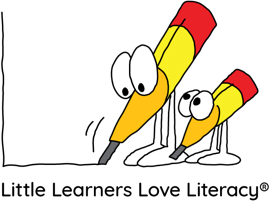What is a 100% Decodable Book?
With the rise popularity of phonics we are also seeing a rise in the number of decodable books. This is fantastic news as children need many opportunities to practise their literacy skills. It is important to understand what makes a decodable book so you can select the right ones for your library.
What makes a book decodable?
Well, it is directly proportional to a person’s knowledge of the language and the symbols used to express that language. Therefore, a newsletter such as this one is 100% decodable to an adult who has mastered the English alphabetic code.
The term decoding is a relative term and can be misleading, as it means something different to each person.
How can we determine if a book is 100% decodable and what does that actually mean?
For a novice reader, this newsletter would not be so decodable, as it extends beyond the letter-sound relationships the child is likely to know. An explicit sequential synthetic phonics program will gradually introduce these letter-sound correspondences over time.
A good early decodable book will be phonically controlled to have only the letter-sound correspondences that the child knows. This allows the child to practise their letter-sound knowledge and tackle any new or unknown words by sounding out and blending phonemes together to read a word.
To tell if a book is decodable, it needs to be compared to the sequence of the phonics program taught along side it. If these letters and sounds in the book have been explicitly taught in the classroom then the book is decodable. A good decodable book should tell you exactly what the child needs to know before reading it – in other words it should tell you how the book has been phonically controlled.
How LLLL decodable books are created
The Little Learners Love Literacy® books follow a sequence which has been thoughtfully created to give children success from the beginning.
Phonological awareness skills of segmenting, blending are introduced and taught along side the letter-sound relationships, as these skills are crucial to decoding words.
In our Little Learners Love Literacy® decodable books, the word ‘a’ is not introduced until Stage Plus 4. This is to address a common pitfall encountered with beginning readers – that is, the confusion of introducing the letter ‘a’ representing /a/ inside words but representing /u/ when it is a word in a sentence (I can see a hat).
At Little Learners Love Literacy we have introduced the concept of Heart words in our series of books. These are high frequency and interest words that children may not be able to decode at that stage, but are needed to enrich the stories. We call these Heart words ... children need to learn to read them 'by heart'. Later these words will become decodable.
We group the Heart words in Stages Plus 4, 5 & 6 into phoneme groups.
There is no magic in learning to read, but Little Learners Love Literacy® makes it simple with sequenced decodable books for children to practise their alphabetic code knowledge ... stories children LOVE to read with words they CAN read.
Maybe, we need to change the language to ‘phonically controlled’ – what do you think?
